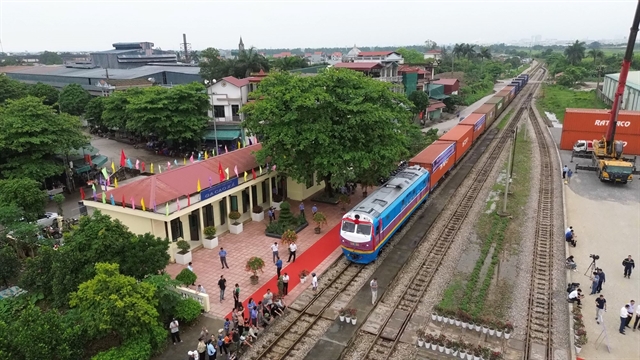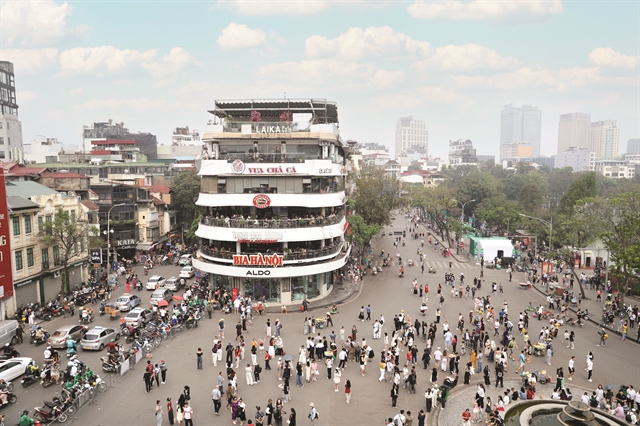 Sunday/Weekend
Sunday/Weekend

By Công Thành
 |
| Members of SaSa voluntary group are ready for a working day at sea restoring defunct coral reefs. The team has spent eight years to restore a coral area of 100,000sq.m in water off Sơn Trà Peninsula in Đà Nẵng City. Photo courtesy of SaSa group |
Hanoian Lê Chiến and his team members from SaSa, a voluntary coral restoration group, have successfully revived damaged coral reefs spanning 100,000 square metres off Sơn Trà Peninsula since 2016, making it the first coral conservation initiative in Đà Nẵng and the coastal central region.
Comprising volunteers from Hà Nội, HCM City, and central regions, the team has worked to restore degraded coral reefs, driven by their shared love for the sea. They have achieved three key goals: establishing an artificial coral restoration area, creating a nursery, and introducing a "dead reef flat" technique for sustainable coral conservation.
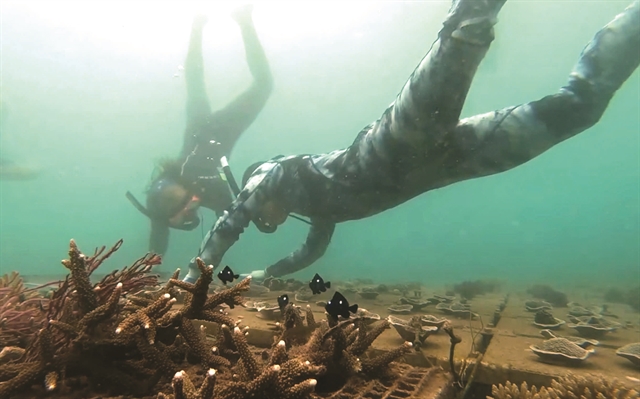 |
| Two members of the SaSa team diving deeply at sea, planting coral branches on a fixed flat at sea off Đà Nẵng. The team is the only voluntary group in coral restoration in Việt Nam. Photo courtesy of Lê Chiến |
“The nursery may seem like a small dot in the ocean, but it holds the promise of reviving what was once a ‘Lost Heaven’ after decades of coral degradation,” Chiến says.
According to him, the coral recovery area will become a safe habitat for thousands of marine species, including fish, lobsters, clams, seahorses, sponges, and turtles, all of which depend on healthy reefs for survival.
“Coral species require 15 to 45 years to grow, and the average reproductive cycle is around 30 years. Therefore, it is crucial for human activities and fishing practices to be gentle,” he says.
The team has been planting fast-growing coral species to create a safe environment for marine life.
“One coral branch can grow 16 to 30 new branches, and within six months, thousands of new coral branches can flourish, providing saplings for the expansion of an underwater coral forest.”
Chiến recalls how the team successfully revived a half-buried coral branch in the Bãi Nam Reef, demonstrating the effectiveness of their restoration methods. The team expanded their coral nursery from 6 to 100 square metres using the "dead reef flat" technique.
Resilient solutions
The method allows coral branches to grow on sturdy, weighted structures anchored to the seabed. This approach proved resilient, surviving a storm in Đà Nẵng a few years ago.
The coral nursery, constructed from 100 heavy dead reef flat pieces, remains stable on the ocean floor. Chiến explains that scuba equipment isn’t effective for their work, so the team has to hold their breath while diving to secure the structures with thousands of screws underwater—a physically demanding task requiring great patience.
“To date, 32 coral species have been restored or cultivated through artificial methods in Bãi Nam, Bãi Bụt and Sụp reefs off Sơn Trà. We’ve also launched the ‘Feed the Ocean’ campaign to boost the reproduction of marine species like fish and crabs,” Chiến says.
Vương Thuý Hạnh, a 41-year-old member of the team, says that the volunteers are united by a deep love for the sea and a commitment to conservation.
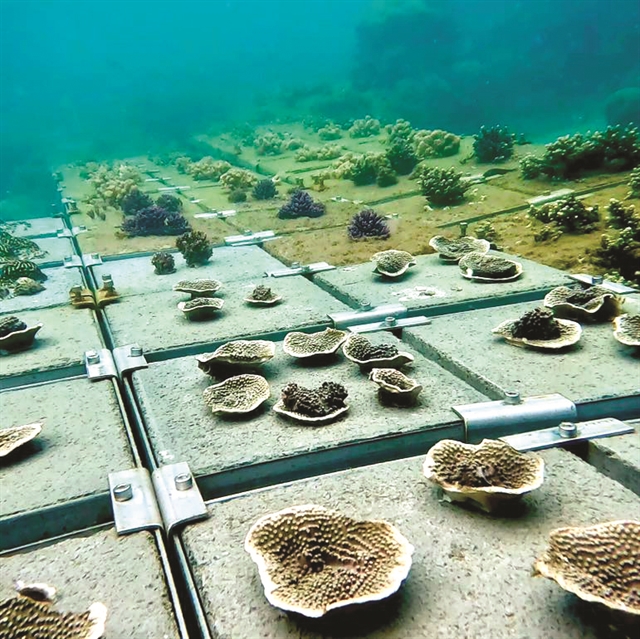 |
| A system of 'dead reef flat' is fixed deeply in water for growing coral. The system can be used as a stable table for coral growing through storms. Photo courtesy of SaSa team |
“We come from different parts of Việt Nam, but share the same passion. We’ve spent nearly a decade studying coral restoration techniques, and the recovery of these reefs inspires us to keep going,” Hạnh says.
Hạnh, who works in finance in HCM City, explains that team members coordinate their schedules to work together in Sơn Trà during the summer months, before the storm season begins.
“It’s exhilarating to see coral branches thrive in rough seas and to witness various fish and shrimp species being born from our coral nurseries,” she says, adding that while damage from storms and heat waves can be disheartening, it motivates the team to work harder on disaster resilience.
Changing mindsets
The team hopes their efforts will raise awareness among communities and businesses about sustainable resource use and eco-friendly tourism. They use social media platforms like Facebook, Instagram and YouTube to document their work and spread the message about the importance of marine conservation.
Chiến notes that irresponsible practices like electrofishing and illegal recreational diving continue to threaten restored coral areas. Some free divers have intentionally trampled on newly grown coral, forcing the team to replant damaged sections.
 |
| Young coral growing in water off Đà Nẵng City's coast after restorative works by the SaSa team. A coral nursery was built in Đà Nẵng for coral restoration expansion projects in central Việt Nam. Photo courtesy of Lê Chiến |
According to a report by the Southern Institute of Ecology, coral reef coverage in Đà Nẵng ranges from 8 to 45.9 per cent, a concerning figure attributed to pollution, overfishing, and unplanned development on Sơn Trà Peninsula.
Hạnh says that while the SaSa team remains a volunteer group focused on coral restoration, they are exploring the possibility of expanding their efforts into a formal organisation with more regular activities beyond Đà Nẵng, potentially across other coastal areas in Việt Nam.
Chiến says he believes that the nursery in Sơn Trà could serve as a marine education centre for students and young researchers, as well as a magnet for diving tourism. He highlights that scuba diving meditation, used in Europe for mental therapy, could be introduced as part of a diving service alongside coral reefs in Đà Nẵng.
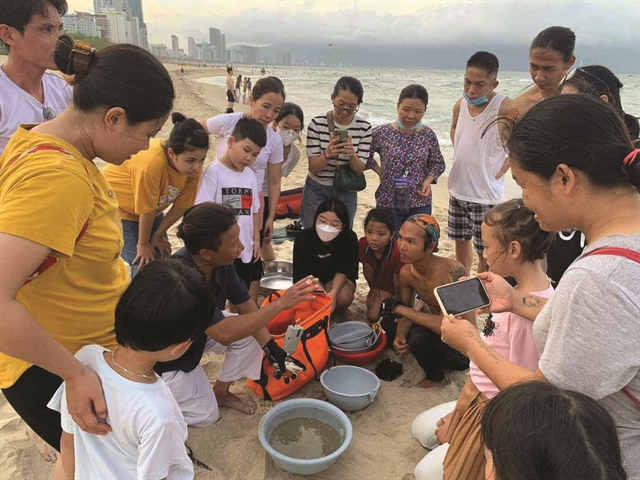 |
| Children and parents join community education on sea creature conservation by the SaSa team on a beach in Đà Nẵng City. Photo courtesy of SaSa team |
The SaSa team, in collaboration with the Chàm Islands Marine Protected Area, plans to extend its dead reef flat conservation efforts to waters near Hội An. VNS



.jpg)


